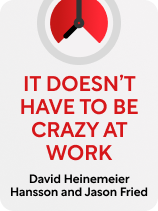

This article is an excerpt from the Shortform book guide to "It Doesn't Have to Be Crazy at Work" by David Heinemeier Hansson and Jason Fried. Shortform has the world's best summaries and analyses of books you should be reading.
Like this article? Sign up for a free trial here.
Do your employees work well together? How do you build a team that enhances each other’s strengths?
In It Doesn’t Have to Be Crazy at Work, Jason Fried and David Heinemeier Hansson share their perspectives on treating employees as a long-term investment. Doing so makes your organization a more effective and satisfying place to work.
Let’s discuss their tips for learning how to create effective teams in an organization.
Tip #1: Don’t Hunt for Talented Employees—Create Them
The first tip for how to create effective teams in an organization is to build up a team from scratch. Most companies get skilled employees by identifying the most talented workers in their industry and trying to steal them away from whatever company they’re currently working for. However, transplanting successful employees from other companies can end in disaster if the new recruits struggle to adjust to your organization. Fried and Hansson argue that the more reliable strategy for learning how to create teams in an organization is to hire employees who show promise and help them reach their full potential.
Three Effective Hiring Criteria
This mindset of creating rather than hunting for employees means that your hiring process will look different from the industry standard. Fried and Hansson recommend ignoring traditional résumé items such as a prestigious education or impressive past job titles. Instead, ask yourself three questions to determine whether someone has the potential to grow into an exceptional employee.
First, are they likable? For the good of the team, make sure to only hire people that everyone would be excited to work with.
Second, do they add a unique perspective to the team? Hiring people from a wide range of diverse backgrounds helps the team produce good ideas and better serve a wider range of customers.
Third, what tangible work have they personally done? Fried and Hansson note that the work someone typically lists on their résumé is too vague or exaggerated to illustrate what they’re actually capable of. Use the interview to uncover what specific tasks they executed in past jobs rather than inferring their skill sets based on their previous work experience. This allows you to avoid onboarding workers who appear valuable on paper but end up being a costly mismatch.

———End of Preview———
Like what you just read? Read the rest of the world's best book summary and analysis of David Heinemeier Hansson and Jason Fried's "It Doesn't Have to Be Crazy at Work" at Shortform.
Here's what you'll find in our full It Doesn't Have to Be Crazy at Work summary:
- How today's "hustle culture" ruins the lives of many
- How you can establish more reasonable and sustainable goals
- The three qualifications to look for when scouting for any potential hire






